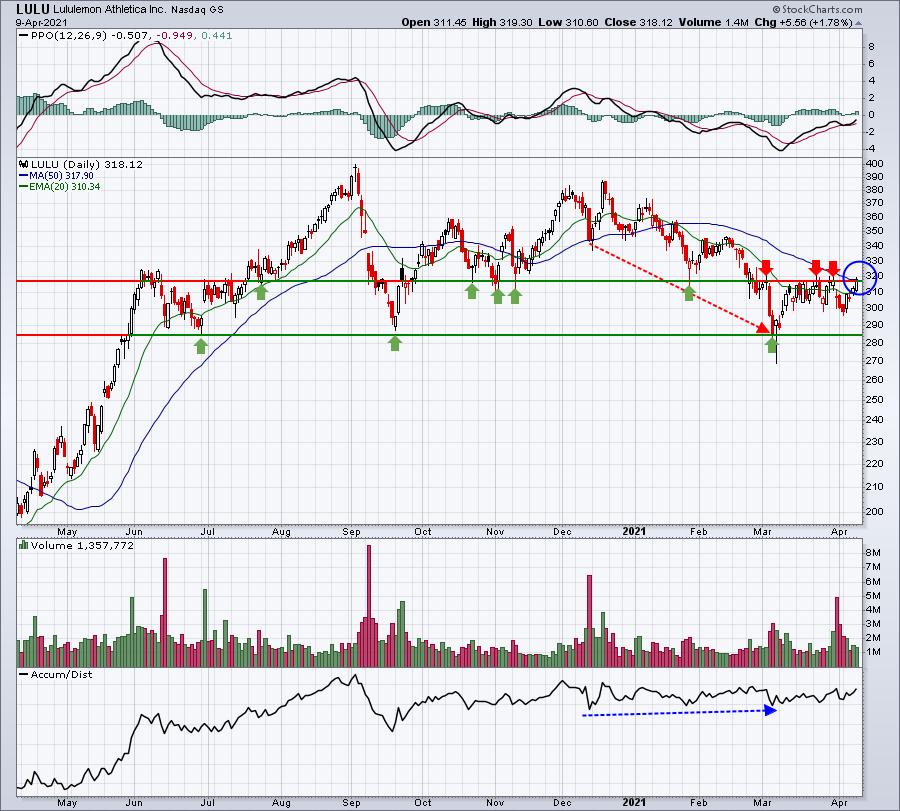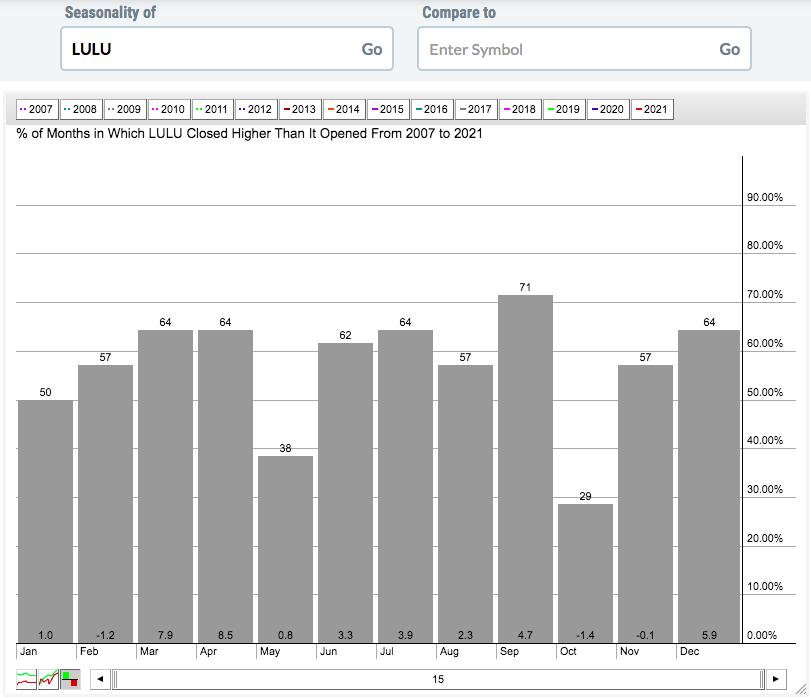When I see a long-term winning stock sell off for a period of weeks, or even months, I always question the motive. If institutions want to buy a large position in a company, it takes time to do so. They don't simply put a market order in for 1 million shares. Market makers have the responsibility to purchase shares for institutions at the best possible price.
That's why I always roll my eyes when the media tries to convince us that growth stocks are in trouble with 10-year treasury yields ($TNX) rising from 1.00% to 1.75%. It doesn't make sense. But if the media says it, it must be true, right? Whatever.
I've spent time writing about companies like Tesla (TSLA) and Peloton (PTON) that are dealing with lengthy consolidation periods. Their price action says one thing as their recent downtrends are undeniable. But if you look at their accumulation/distribution lines (AD lines), they appear as though they're being accumulated. In many cases, looking at their "big picture" chart (10-year weekly chart) provides a completely different perspective as well.
In this article, I want to provide you a stock that look very attractive at its current price. I believe institutions are accumulating, so buying into current consolidation will likely pay off big time down the road.
Lululemon Athletica (LULU)
LULU has been consolidating since its September 2020 high. After an initial selloff during September, LULU rebounded in December to nearly reach its September high. That's when the recent 4-month downtrend began. Despite the drop from 387 in mid-December to its low of 269 on March 5th, LULU's AD line printed higher lows. If LULU was being heavily distributed by institutions, it certainly doesn't show up on this chart:

Price action is clearly trending lower (red-dotted directional line), but accumulation appears to be taking place (blue-dotted directional line). We're one or two good solid volume days away from a possible AD line breakout to the upside. I see LULU going much, much higher.
Also, seasonality favors LULU uptrending from here. Check out the average monthly returns by calendar month since LULU went public:

Over the past 15 years, the March to September period has averaged gaining 31.4%. Meanwhile, the October to February period has averaged gaining just 4.2% per year. Most stocks show their biggest gains beginning in October, but LULU's history has been quite the opposite of that. Knowing this seasonal information is important, as it suggests that March 5th low might have been the low for this year. The AD line confirms this by suggesting that institutions are gladly buying every share that the retail trader wants to sell.
I'm not a Registered Investment Advisor, so I'm not licensed to advise anyone to buy or sell a stock, but the information above certainly points to higher prices for LULU. Just my opinion.
If we do see LULU break out this week, pay attention to monthly options that will expire on Friday. That could play havoc with LULU and many other stocks next week, especially those that have run significantly higher or lower over the past few weeks. I'll be hosting our monthly max pain session on Tuesday afternoon for EarningsBeats.com members.
Also, if you prefer ETF investing, then you should consider our "Sneak Preview - Model ETF Portfolio" event on Monday, April 12th. This event is FREE to everyone, so mark your calendar for 4:30pm ET. For more information on both of these events, CLICK HERE.
Happy trading!
Tom






